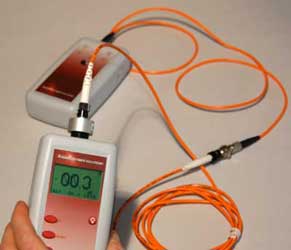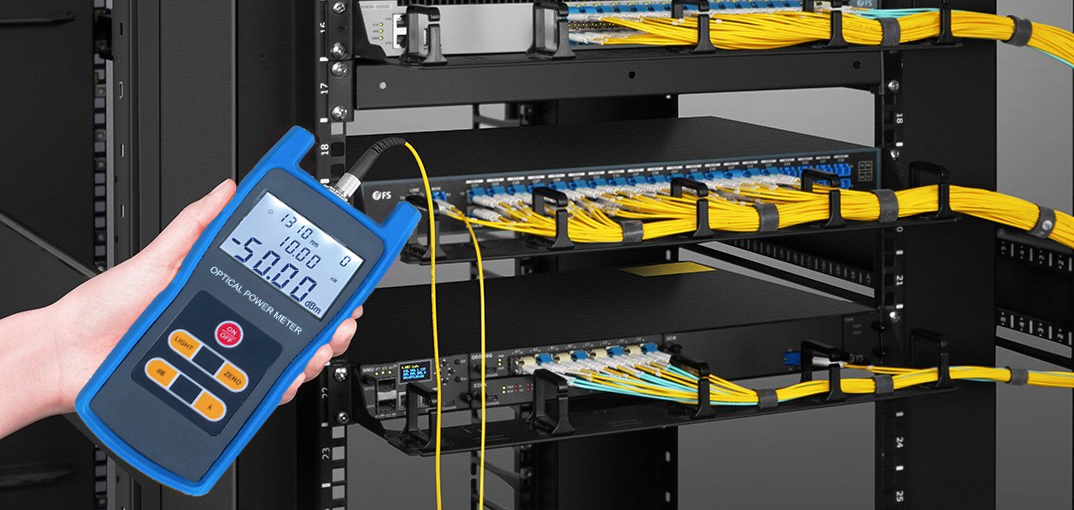Industries depend on fibre testing equipment to ensure product standards.
Industries depend on fibre testing equipment to ensure product standards.
Blog Article
Checking Out the Conveniences of Optical Fibre Testing for Boosted Interaction Equipments
The relevance of optical fiber testing in modern communication systems can not be overemphasized, as it functions as a foundation for making sure network integrity and efficiency. Utilizing sophisticated techniques such as Optical Time-Domain Reflectometry (OTDR) and insertion loss evaluation, companies can not only determine faults but additionally maximize their arrangements. This aggressive testing strategy has extensive implications for signal high quality and functional efficiency, elevating the concern of just how these methods contribute to long-lasting sustainability in an ever-evolving technological landscape. Comprehending these characteristics is essential for stakeholders intending to maintain an one-upmanship.
Importance of Optical Fibre Testing
The importance of optical fiber testing can not be overstated in today's data-driven atmosphere. As companies increasingly count on high-speed data transmission for day-to-day procedures, the integrity and performance of optical fibre networks are extremely important. Evaluating makes sure that these networks can support the vast quantities of information created and transferred effortlessly, fostering effective communication and connection.
Optical fibre screening offers numerous critical functions, consisting of confirming installation top quality, determining potential mistakes, and identifying overall system performance. Regular testing can protect against expensive downtimes and solution disturbances, permitting companies to maintain operational connection. It assists in conformity with industry requirements and policies, making sure that fibre optic installments meet called for specifications for security and integrity.
In addition, screening can enhance the long life of fiber optic systems. By proactively determining concerns such as signal loss, depletion, or connector failings, organizations can address issues before they rise, hence prolonging the life of their infrastructure. In summary, optical fiber screening is not simply a technical requirement however a tactical investment that improves network integrity, optimizes efficiency, and eventually sustains the development and performance of modern-day communication systems.
Key Testing Methods

OTDR is an important technique used to recognize faults, action splice losses, and examine the total honesty of a fiber optic web link. By sending a pulse of light down the fibre and assessing the shown light, professionals can pinpoint locations of faults and examine the network's efficiency over fars away.
Insertion loss testing measures the quantity of signal loss that occurs when light passes via a link or splice. This technique is crucial for confirming that connections meet specific loss limits, which is crucial for keeping optimal performance in communication systems.
Optical return loss screening measures the amount of light mirrored back in the direction of the source as a result of blemishes in the fiber or connections. High return loss worths indicate far better efficiency and minimized signal deterioration.
Together, these screening techniques offer an extensive evaluation of fiber optic networks, ensuring their reliability and functionality in varied interaction applications.
Influence On System Performance
Effective optical fiber testing straight influences the general efficiency of interaction systems. By making sure the integrity of fibre optic wires, testing recognizes possible faults such as depletion, splice loss, and adapter misalignment. These problems can dramatically degrade signal top quality, leading to disruptions and lowered information transmission rates.

Additionally, normal optical fibre screening adds to long-term system sustainability. It makes it possible for very early detection of damage, permitting timely upkeep and upgrades before major failings happen. This not just lengthens the lifespan fibre testing equipment of the infrastructure yet likewise makes certain that communication systems continue to be competitive in regards to performance.
Cost-Effectiveness and Effectiveness
Cost-effectiveness is an important consideration in the release and upkeep of optical fibre networks. Executing durable optical fibre screening treatments can considerably lower functional costs by recognizing concerns before they escalate right into significant troubles. fibre testing equipment. By detecting faults, depletion, and various other efficiency barriers early, companies can prevent expensive repair services and downtime, which can disrupt services and cause earnings loss
Additionally, efficient screening approaches streamline the installment process, allowing service technicians to work better. This converts to reduce work prices and faster task completion times. Advanced screening equipment, such as Optical Time Domain Name Reflectometers (OTDRs), enables an exact evaluation of fibre top quality, making sure that just ideal products are made use of, consequently lessening waste.
Regular screening additionally adds to much better resource allowance. By comprehending the network's performance, organizations can make enlightened decisions regarding upgrades and growths, guaranteeing that investments are made where they are most required. In recap, optical fiber testing improves cost-effectiveness and efficiency, sustaining the long-term sustainability and competition of interaction systems in an increasingly requiring market.
Guaranteeing Long-Term Reliability
Applying extensive optical fibre testing not only enhances expense financial savings and functional efficiency but additionally plays a crucial duty in ensuring the lasting reliability of communication networks. Consistent screening methods, consisting of depletion and data transfer evaluations, blog here assistance recognize prospective deterioration in fiber efficiency before it results in service disruptions.
By employing advanced testing methods, network drivers can determine faults or weak points in the fiber infrastructure, permitting timely remediation. This proactive strategy minimizes downtime, making certain that interaction systems stay functional and effective. In addition, regular screening contributes to the advancement of a more durable network, as drivers can adjust and enhance their framework based upon real-time data understandings. optical anchor fibre diameter analyser.
Additionally, guaranteeing compliance with industry criteria through optical fibre screening strengthens the top quality and honesty of the entire communication system. This adherence not only boosts confidence among stakeholders yet additionally lines up with governing requirements, which are progressively strict.
Final Thought
To conclude, optical fiber screening functions as a basic element in enhancing interaction systems. By using different screening methods, such as OTDR and insertion loss evaluations, networks can attain ideal efficiency and reliability. The proactive recognition of mistakes not only boosts signal high quality but additionally decreases downtime, ultimately adding to cost-effectiveness and operational effectiveness. Moreover, adherence to market requirements fosters stakeholder self-confidence, making sure the long-lasting sustainability of communication frameworks in a significantly data-driven landscape.
Report this page